
Best activities in Tambopata rainforets. Close to the city of Puerto Maldonado, in the southern part of the Peruvian jungle, is the Tambopata National Reserve, one of the most important natural areas in the entire country and with one of the greatest biodiversities on the entire planet. Walking through Tambopata is, without a doubt, a gift from nature.
The Tambopata National Reserve is divided into 6 zones: the wild zone, the direct use zone, the tourist and recreational use zone, the recovery zone, the special use zone and the strict protection zone. In the latter, access is only allowed for scientific research.
These six areas are the habitat of an infinity of fauna and flora. Just knowing the data will leave you speechless: up to 632 species of birds, 1,200 butterflies, 103 amphibians, 180 fish, 169 mammals and 103 reptiles have been found.
In addition, its large lakes, such as Sandoval, Sachavacayoc and Valencia, attract attention. But to truly be fascinated by the fauna of this national reserve, visit the clay licks, where hundreds of macaws, parakeets and parrots gather.

In its almost 300,000 hectares, the Tambopata National Reserve offers countless activities to do and explore the most remote corners of the jungle. Some better known and others less, here we leave you with the places that you cannot miss when you visit this wonder of the Amazon.
The place is a conservation center for at least 1,255 different types of plants and trees duly cataloged. In order for the traveler to learn to value this wealth of flora in the area, the different hostels in the area offer walks that allow them to observe and appreciate this natural treasure, which is also accompanied by the wealth of fauna.
In the same way, during the visit to the Tambopata National Reserve it will be possible to get in contact, if the visitor wishes, with the different native communities of the area, also for the most intrepid tourists, the organized night trips in canoes to observe the alligators on their own stage.
Among some specific attractions in the area, you can see the Macaw Collpa, on the left bank of the Tambopata River. This is recognized for being the largest in the Amazon and home to a large number of parrots, parakeets and macaws, which, to the delight of those who observe them, perform their fluttering show every day at six in the morning before starting the so-called Collpeo, which is nothing more than the ingestion of clay in the river ravine.
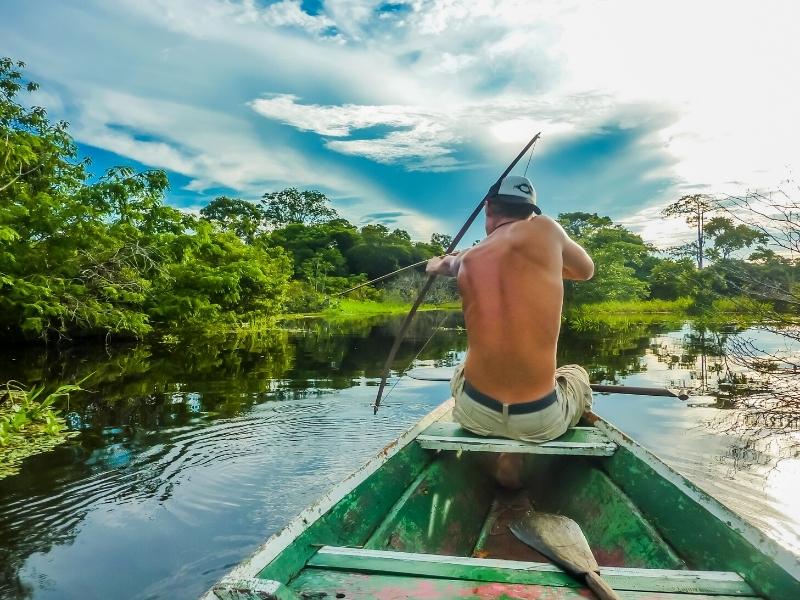
In the Tambopata Reserve, appreciate the majesty of nature on jungle trails and tranquil waterways, look for alligators and river otters, and draw lines for Amazonian fish like piranhas. Rest in your hammock as the sun goes down and then immerse yourself in the jungle at night, when many of its creatures become active.
At first, you will enter the jungle and see only an undifferentiated mass of green. But a few days in the company of an expert guide will train your eye to spot different species of plants, trees, and insects and sharpen your ears to hear the calls of exotic wildlife. It’s no exaggeration to say that a trip to the Tambopata Amazon rainforest is likely to change the way you think about the land and your place on it.
The Tambopata National Reserve is ideal for Amazon jungle tours with an emphasis on sustainability and conservation. Many lodges are owned or operated in collaboration with local indigenous communities who are able to reap the benefits of tourism while achieving sustainable development. The goal is to keep this natural area pristine for future generations.

Lake Sandoval is located in the Tambopata National Reserve, a place of almost 3,000 square kilometers where flora and fauna are the true protagonists. This area is located in the department of Madre de Dios, south of the city of Puerto Maldonado. This wonderful attraction has become the most beautiful tourist destination in this reserve; also becoming the most requested and visited tourist site.
Lake Sandoval has a crescent-shaped area 1,000 meters wide and 3,000 meters long. Likewise, in terms of depth, the lake reaches approximately 3 meters in height; and its waters generally have a temperature of 26ºC. This natural paradise not only stands out for its scenic beauty; but also for the diversity of species of fish and flora found in its waters.
This place is also ideal for “Birdwatching” (bird watching); since thanks to the vegetation that exists in its surroundings; This space is conducive to carrying out this type of activity; there is a great variety of birds between residents and migratory; even some of the species are in danger of extinction. The most outstanding species of Lake Sandoval is the Hoatzin (Ophisthocomus hoazin), the giant otter, the black alligator, among other species.
Among the most requested tourist activities; there are boat rides, during the months of May to October; since the lake and nearby rivers have a low flow, ideal for practicing this activity. There are also walks around the lake, night walks, visits to the island of the monkeys, among others.
Lake Sandoval is a wonder for the eyes and the senses: its waters, surrounded by aguaje palm trees (a typical fruit of the jungle that you cannot miss), are the habitat of an unimaginable amount of fish, more than 6,500 species! they live here!
Sandoval Lake is the perfect place to spend a vacation of total relaxation and rest from the daily routine. But not everything that awaits you in this destination is to lie down in a hammock to enjoy the landscape and not think about anything, since in the lake and its surroundings you can carry out various activities. Here we tell you some of the best things to do in Lake Sandoval.
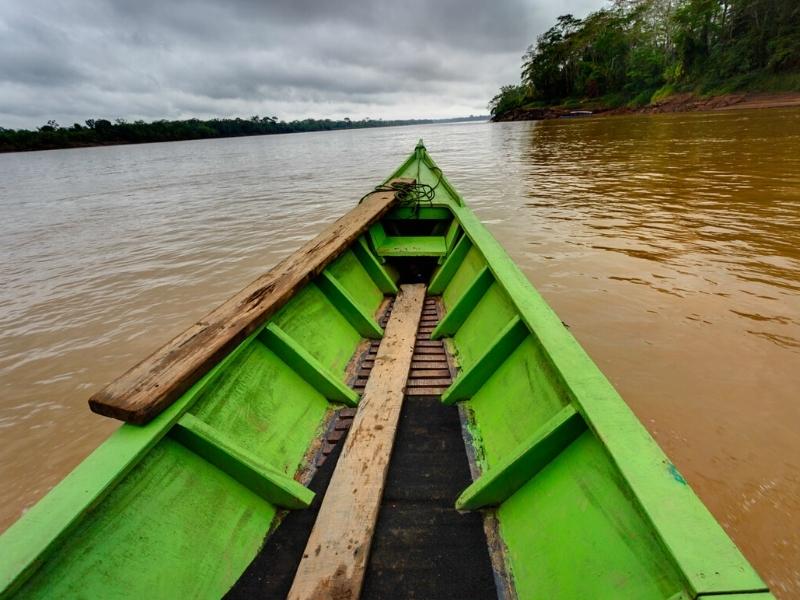
The main attraction of the Tambopata National Reserve is perhaps one of the most beautiful jungle lakes in the Amazon. Of course, we are talking about Sandoval Lake. It is located approximately 3 hours from the city of Puerto Maldonado in the southeastern part of Peru. More precisely in the low jungle that gives way to the great Amazon. This is a protected area and the refuge of more than 74 types of reptiles, 1,300 species of butterflies, 592 birds, 127 amphibians, and 103 mammals. It ranks among one of the top ten biodiversity areas due to its greatest abundance of wildlife on the planet.
The area promotes the practice of ecotourism. Which is not only a source of income for the inhabitants of these areas but also a way to raise awareness and sensitize on how to treat the planet to preserve it. Ecotourism is the practice of tourism with a responsible and friendly environmental direction. And here in Tambopata, we can show you how to practice it.

To get to Sandoval Lake, you would first have to take a flight to Puerto Maldonado, the gateway to the different routes within the Peruvian Amazon. You can choose to do it from the Imperial City and take advantage of the different amazon tours from Cusco. To enjoy a tour inside Sandoval Lake, it is essential to organize with a company since it is required to cross the Tambopata Reserve.
Upon landing in the city, our staff will accompany you from your arrival to your departure, so you will not have to worry about absolutely anything. After entering the Reserve, it is necessary to take a short bus trip to the Tambopata River. Here, a motorized canoe will wait for you.
You will have to take a motorboat ride (40 min) and then reach the main entrance of this beautiful place. You will have a 30-minute trip down the Madre de Dios River. Then you will come to a path, where a moderate trail awaits you. The entire trail is a visual spectacle where the true magic of the tour begins. From that moment on, you can begin to distinguish some species of animals and birds.
After walking for a few minutes along a narrow path you will arrive at a boat dock. And depending on the weather (November to April is the rainy season) you will take a rowboat. In the boat, they will row to penetrate the heart of the Lake itself. From here you will feel united to nature, full of peace and with indescribable tranquility. This and more will be felt along the way to Sandoval Lake.
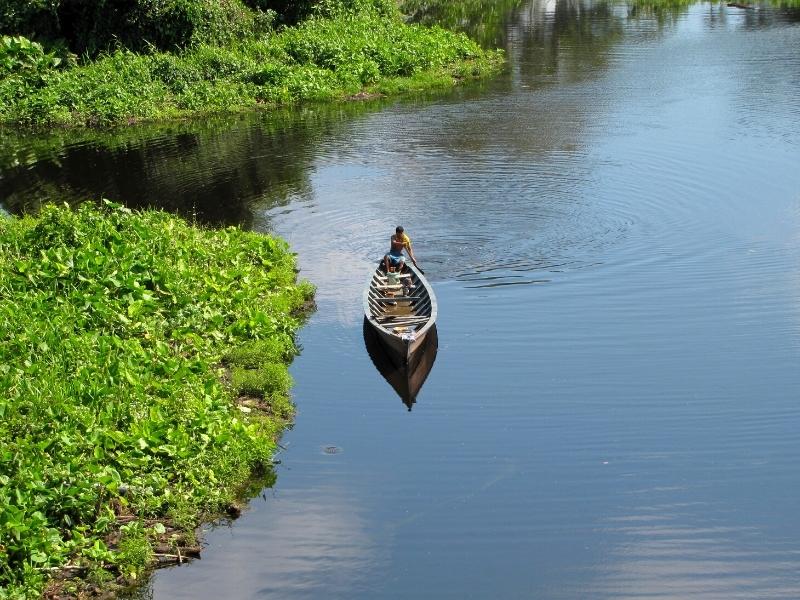
If you are a fan of watching animals and other things, near the jungle city is the pristine Sandoval Lake. This wonderful meander-shaped lake is separated from the main channel of the Madre de Dios River. Its calm waters are perfect for boating. In addition, the region is favored as it is one of the areas with the greatest biodiversity in Peru. A tour of Sandoval Lake is one of the best tours available within Puerto Maldonado.
For those looking to do tourism within the Peruvian Amazon, they cannot miss this wonderful destination. During the tour, you will be able to observe and take photos of the different howler monkeys, water turtles, alligators, and the numerous birds in Tambopata. There are different tour options to enjoy. And all options can be modified to your liking. There are full-day tours, two-day tours, and up to 4-day ones to fully explore this wonderful place.
You can embark on a tour with a naturalist guide who will explain everything there is to see. In this tour alone you will be able to spot a hundred specimens of exotic animals. It is advisable to make arrangements in advance to guarantee your visit. It is also a good idea to enjoy the tours during sunrise or the hours before sunset. Since it is during these times when the wildlife is most animated. Even the night walks will give you a different glimpse of the region and its animals.

Enjoy navigating through a 100-foot high Mauritia palm forest flooded. All while large groups of macaws flood everything with their sounds. Or opt to appreciate the playful brown capuchin monkeys as they walk through the palm trees. You can see groups of up to 50 or more squirrel monkeys as they chat and jump in the trees. And as the sun sets, look to experience the lake’s nightlife under a star-filled sky while looking to spot the black caiman. In addition, no visit to the lake is complete without guided walks in its surroundings.
The different naturalist guides will be able to bring the jungle to life with their explanations of ecology. Learn about the natural history of the area as you explore the trails and appreciate the many species of birds and monkeys. You will be able to enjoy this and more on a tour of Sandoval Lake. The entire tour is girded with greenery and beautiful landscapes.
In your surroundings, you will be able to appreciate a wide range of birds at first. If you are lucky, you will also see the mighty Jaguar stalking its prey and other jungle predators. Sandoval Lake and the Tambopata Reserve not only offer an incredible variety of flora and fauna but also allow you to appreciate and value the world we live in. You will have the option of staying more days near the Lake if you so decide.
Sandoval Lake has a series of small shelters that offer various activities during your stay. You will also have the opportunity to take a night walk, where you will appreciate a wide variety of insects and bedbugs. Along the Lake whose shape is like a horseshoe, there are trails to observe birds, mammals, and flora. All these activities can be done from 1 to 4 hours.
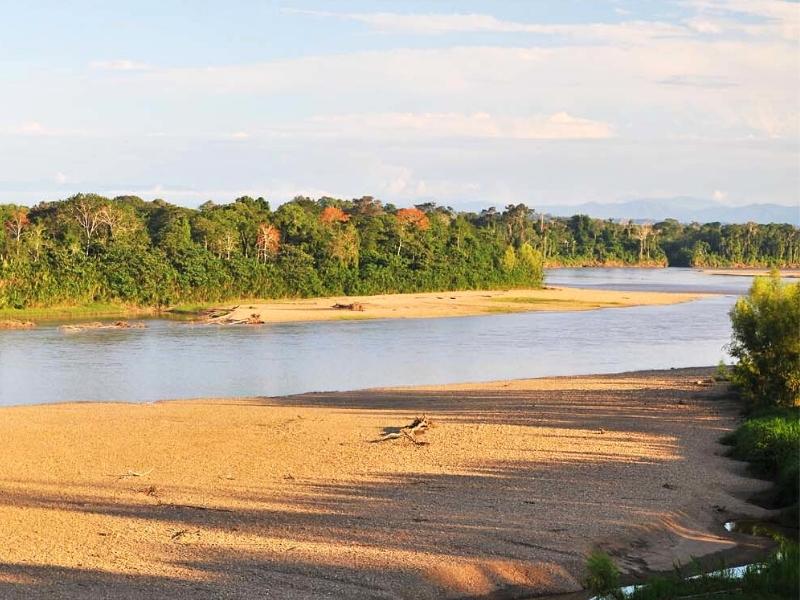
Being in an Amazon region, expect the weather surrounding Sandoval Lake to be humid and with occasional rain. The rainfall that occurs within the Tambopata National Reserve can be between 2,500 to 3,000 millimeters a year. But most of these rains occur within the rainy season (November to April).
While within the dry season, you can expect some cold fronts coming from the South Atlantic. If you want to take advantage of your time in the Andean country, you can try traveling during the dry season. One of the best-known facts about Peru is that the dry season coincides with the high tourist season. Take these data into account before organizing your trip to the Peruvian Amazon.
Lake Sandoval, being within the Tambopata National Reserve, has the same climate; this is hot and humid. Likewise, it has two well-defined seasons:
Rainy season: This season includes the months of November to April. During this period the maximum temperature will be about 29ºC and the minimum about 20ºC. Likewise, there is presence of humidity almost 100%; that is why the embarrassment is quite noticeable. In addition, the rainfall is quite strong and dense; typical of the jungle.
Dry season: This season includes the months of May to October. During these months the maximum temperature will be 32ºC and the minimum 18ºC. Therefore, this period is recommended for trips. During these months the rainfall will be quite low, making the roads accessible and the flow of the rivers decrease. Also, the humidity drops to 67%.
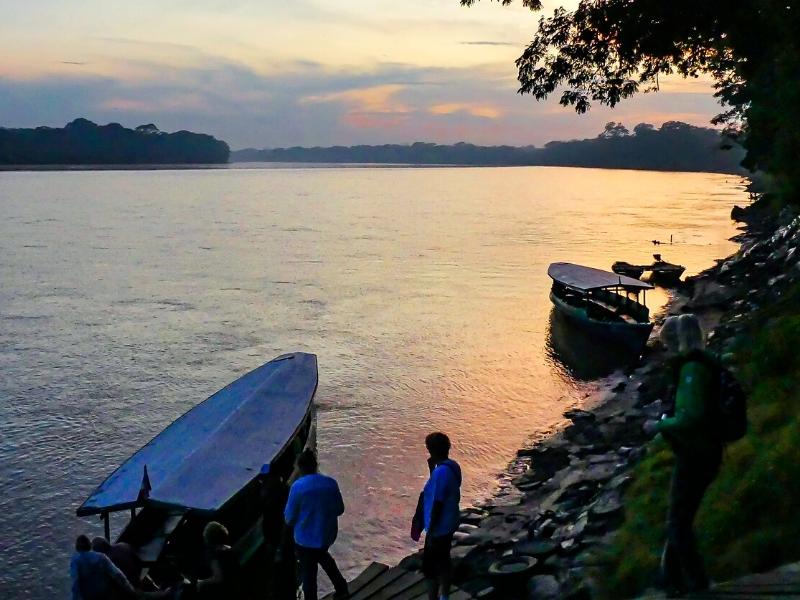
The activities that you can do in and around Lake Sandoval are the following:
Boat rides on Lake Sandoval:
This is one of the highly requested activities, it consists of getting into a boat and rowing while one crosses the lake. During the walk you will be able to enjoy wonderful views of nature in conjunction with something, you will be able to observe birds in the nearby vegetation, animals in the water such as alligators, otters; even animals drinking water on the banks.
Walks around Lake Sandoval:
When you visit the jungle, it is always very exciting to walk its paths on your own. You will be able to see various animals moving freely from tree to tree and you will discover the most secret corners of the enigmatic Amazon. This is another of the activities requested by many travelers, especially for bird watching; and of other species. But, we recommend doing it accompanied by a specialized guide; since they know the route, dangerous animals or insects and plants that could cause us an unfavorable reaction. As well as take the services of an authorized travel agency.
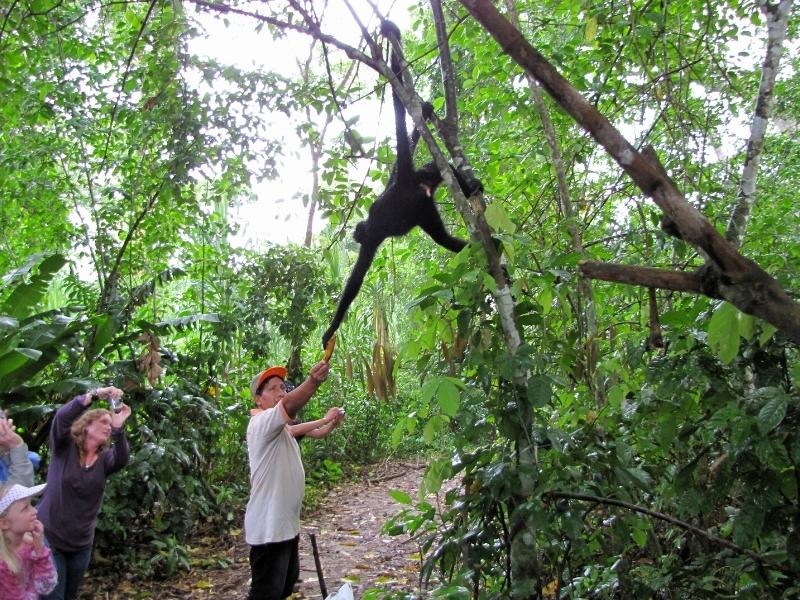
Night walks:
Can you imagine going through the dense jungle with only the light of the moon? This is one of the most common activities around Lake Sandoval. You will enter the night of the Amazon, with millions of sounds around you that you do not know where they come from and with the mystery of not knowing the animals that are accompanying you on this adventure. You dare? Of course, it is an excursion only suitable for the most intrepid.
Generally, people who stay in a Lodge of the Tambopata National Reserve. Since while one walks one does not know what animals are behind or closely observing; the only light that accompanies the walkers is the light of the moon and the light of lanterns.
Monkey Island:
To visit this small space is to have a truly fascinating experience; since during the tour the little mischievous monkeys often play tricks on visitors such as climbing on their backs or taking away some clothing or fruit. It is advisable to have a camera at hand to immortalize the moment. Also, remember, do not give animals food that is not in their diet such as candies, chocolates, etc.
Enjoy a good Paiche:
The paiche is one of the fish that lives in Lake Sandoval and a very important ingredient in the cuisine of this region. As traveling is also knowing the gastronomy of each place, do not hesitate, when you visit Lake Sandoval choose some elaboration with paiche at lunchtime and delight yourself with the flavor of this dish.
Panoramic views:
One of the most beautiful experiences near Lake Sandoval is being able to observe the entire jungle with a panoramic view. To do this, a few years ago they built a bridge 30 meters high where you can appreciate the immensity of the lake and its surroundings.
Meet strange animals:
In addition to the fish that live in Lake Sandoval and the monkeys that will climb on your back, this place has countless animals as neighbors. Some of them are completely unknown to tourists, for example, the Hoatzines or the giant otter, so always go with your eyes wide open, because you do not know when you will find a new species around you.
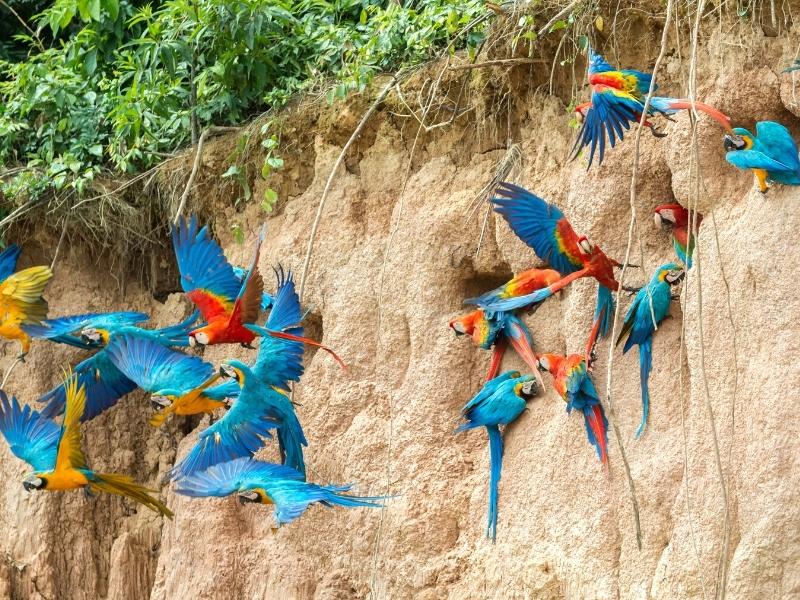
Located throughout the reserve, multiple clay licks or natural clay formations attract birds and mammals, giving visitors a wonderful view of the diversity of birds with plumage of different colors. As well as the set of sounds that emanate from this area.
The Chuncho and Colorado Macaw Clay Lick is a paradise for birds and other mammals in the national reserve, where different species of birds arrive after sunrise to enjoy the mineral salts.
Green, blue, red and yellow macaws, parrots and parakeets fly by in their hundreds, creating a colorful and cacophonous spectacle that is truly a wonder to behold. If visiting a clay lick is your priority on an excursion to Tambopata, check with your travel agent beforehand to confirm that excursions are available.
The lowlands of the eastern Amazon have some of the most diverse avian communities in the world, home to more than 20 species of psittacines (macaws, parrots and parakeets). The densities of psittacines in this region can reach thousands of parrots congregating daily on the banks of the rivers to eat clay apparently, the clay consumed in these clay licks represents an important source of sodium and can protect the birds from the toxins present in the diet. Psittacines feed predominantly on seeds, ripe and unripe fruits, and flowers, occasionally supplemented with bark and other inputs.
Unlike many other birds, New World psittacines do not seem to be able to modify their diet so that it is predominantly insectivorous, which is why they are closely linked to the patterns of flowering and fruit production in the forest. While climate fluctuations in the tropics are remarkably less than in temperate zones, flowering and fruit production are known to vary seasonally in each location where they have been studied.
Few plant species flower and bear fruit throughout the year, which means that different food sources are available to parrots at different times of the year. Also, total food abundance fluctuates in response to seasonal patterns of precipitation. These annual variations in food availability have important effects on the annual life cycles of parrots. For example, lack of food can lead some or all members of a species to move to other areas in search of food resources.
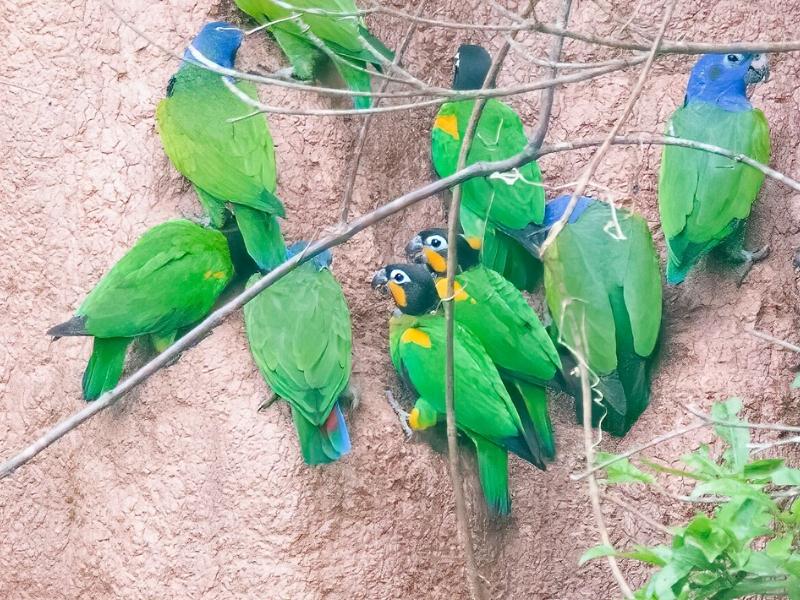
The place is located on the border between tropical humid forest and subtropical humid forest, at 250 m.a.s.l. and with an annual rainfall of 3200 mm. The dry season extends between the months of April and October, with an average monthly rainfall of 90 to 250 mm.
The clay lick is a clay bank, 500 m long and 25 to 30 m high, along the western bank of the Alto Tambopata River approximately 1 km from the research center. The ravine is formed by erosion caused by the Tambopata River. The clay lick soils are rich in clay with high cation exchange capacity and high levels of sodium.
Seasonal patterns are similar throughout the year, with a period of highest usage during the months of July through January, and a period of lowest usage during the months of February through June. These patterns are similar to those observed in other clay licks within the region, which suggests that there is an environmental influence during the year. This is also related to annual rainfall, which determines fruit growth patterns and food availability.
Clay deposits are found in different ecosystems on the planet, but they are more relevant in the Amazon because the greatest amount of soil is acidic, for this reason in the Amazonian forests, the clay licks are highly frequented by various species. of animals, highlighting mammals and birds.
In some sectors, especially when the clay licks are located in the riverbed, they become a great tourist attraction, especially due to the visit of colorful birds such as macaws and other species of parrots.
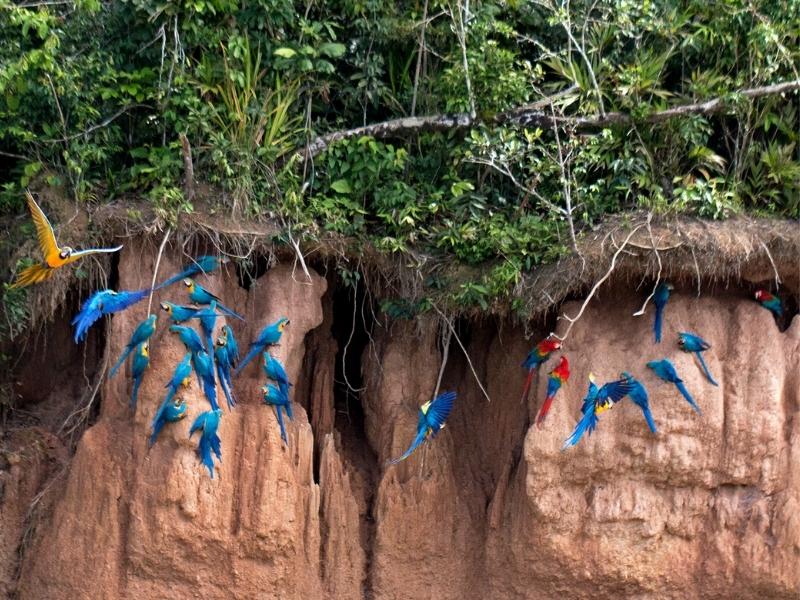
The diet in psittacines is relatively diverse, they feed on fruits, berries, seeds and nuts, as well as seeds and green fruits, those with a hard and spiny shell, or those that are poisonous and contain toxins (caffeine, tannins, quinine, nicotine, etc. ) that serve as a defense against the consumption of birds simulates the digestive process by adding toxins and clay with different CIC (Cation Exchange Capacity)
Instead, their results indicate that the main reason for geophagy is toxin adsorption, as alkaloids (positively charged toxins) bind to cation exchange sites (negatively charged) on clay particles. Approximately 100 mg of quinine alkaloid are adsorbed per gram of clay consumed.
This mechanism could be associated with gastrointestinal protection, since the presence of clay in the intestine increases secretion and improves the ability of mucosal barriers to protect the lining of the intestine from chemical attack.
On the other hand, in subsequent studies, the selection of soils would be based mainly on the sodium content, necessary in the diet for osmotic balance and nerve transmission functions. Birds could be using the dense and plastic textures of saline soils rich in clays with a high content of exchangeable sodium.
Apart from the biochemical aspects, social interactions are also a reason to visit the clay licks, the birds could be arriving only to interact with members of the same species, find a mate or to learn new food resources in the case of juveniles.
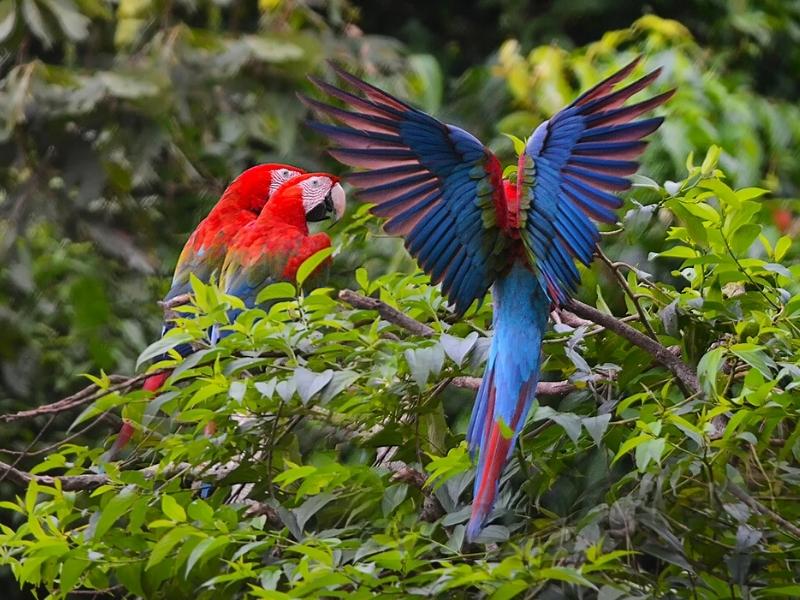
The Psittaciformes are a diverse order, distributed mainly in Australia, the Neotropics (from southern America and northern Mexico to the southern tip of Brazil in South America), tropical Africa, and Asia. It encompasses around 353 different species divided into two families:
Cacatuidae and Psittacidae, the latter groups macaws, parrots and parakeets, all with the common characteristic of a curved beak. In Peru, 52 species of psittacines represent the diversity of this group.
The individuals are particularly colorful, the sizes are variable, it has a range of 8 – 10 cm to 1 m in length, in Peru the largest macaw, A. chloropterus, has an approximate size of 90 cm and a weight of 1.05 to 1.32 kg
in the adult stage. Most of them live in forest habitats and therefore are exceptionally arboreal, their diet can be generalist, made up of parts of plants with a wide dietary flexibility that allows them to expand their distribution, and specialist in a few cases, such as that of the macaw Anodorhynchus leari, which conditions a small habitat range.
Generally they are gregarious for at least part of the year, either in small flocks or pairs, they are mainly monogamous and in the case of many large species they mate for life, they show a complex organization. The female usually raises the chicks and often the male is responsible for feeding her in the nest, there is little sexual dimorphism between the sexes, they raise the chicks inside tree cavities, and the availability of these nests is a limiting factor in reproduction. because very few species build nests.
The birds visit frequently between 05:30 and 07:29 hours, A. severus, P. menstruus and A. farinosa between 05:00 and 06:29 hours, A. ochrocephala between 05:00 and 05:30 and also at 06:00 and 06:29 hours, something similar happens with A. weddellii, which registers arrival peaks at various times of the day, from 05:30 to 05:59, 06:30 to 06:59 and 07 :30 to 07:59, E. aurea during 06:30 and 07:59 hours, F. modestus during 11:00 and 12:00 hours, it should be noted that the species P. barrabandi has arrival records in very early hours in the morning (05:00 to 05:59) and P. cayennensis during 07:30 and 7:59 hours
During the sighting days, between 07:15 and 07:29 hours the largest number of species present in the clay lick is recorded (10 species), on the other hand the largest number of bird sightings is during 09:30 and 09 :44 hour. However, there are activity peaks in the use of clay licks during 07:45 and 08:14 hours and 10:00 and 10:14 hours.
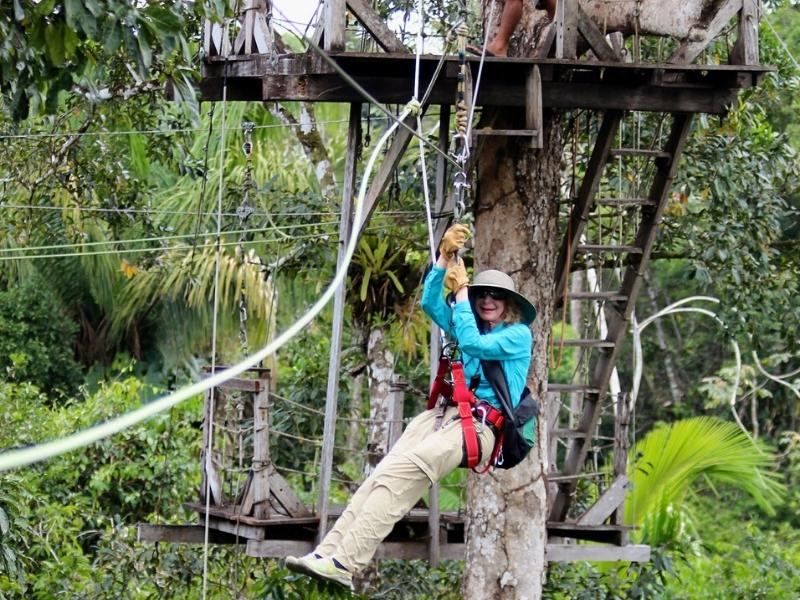
It’s one thing to explore the jungle at ground level, where the trees stand like cathedrals wrapped in lush greenery. It is a totally different world at the level of the tree canopy, 25 to 40 meters above the ground, with an endless forest that stretches before your eyes like a lush green sea. The fruits and flowers attract birds and small animals, which nest there to stay safe from larger predators. Monkeys swing from the branches, leaving a green whisper in their wake. You can witness this wonderful natural life by visiting Tambopata, where a handful of lodges near Puerto Maldonado have canopy towers, platforms, suspension bridges, and zip lines.

Numerous jungle tribes live in the virgin forests of the department of Madre de Dios, such as the Eje Esa, the Harakbut and the Matsigenka, Huarayos, Mashcos, and Arasaris, among others, whom you can visit and learn more about their customs and way of living. life.
This native population has many myths and legends, and a great diffusion of folk medicine and quackery based on the large number of medicinal plants that exist. Visit the communities and live with them so you can experience experiential tourism. You can even participate in the ancient medicinal ritual of ayahuasca.
One of the most enriching experiences when you visit the Amazon is to delve into the culture and customs of the indigenous communities that live here. Although there are some that still have no contact with society, most of them are fully familiar with civilization and are used to receiving visits from tourists.
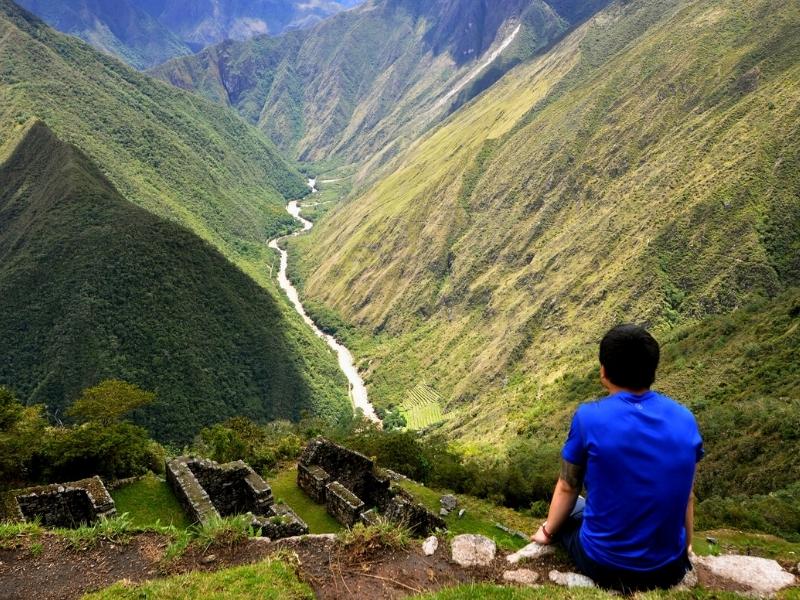
Explore the Manu Amazon Rainforest & Inca Trail hike to Machu Picchu, you will enjoy the best adventures in Peru, exploring amazing inca trail routes and the best amazon wildlife with our local tour guides, in small groups.

The top sights of Peru will leave all the family thrilled by the scenic grandeur, ruined temples, colonial cities, amazing inca trail to Machu Picchu, the Inca Lost City, once buried under the tropical forest which surrounds it.

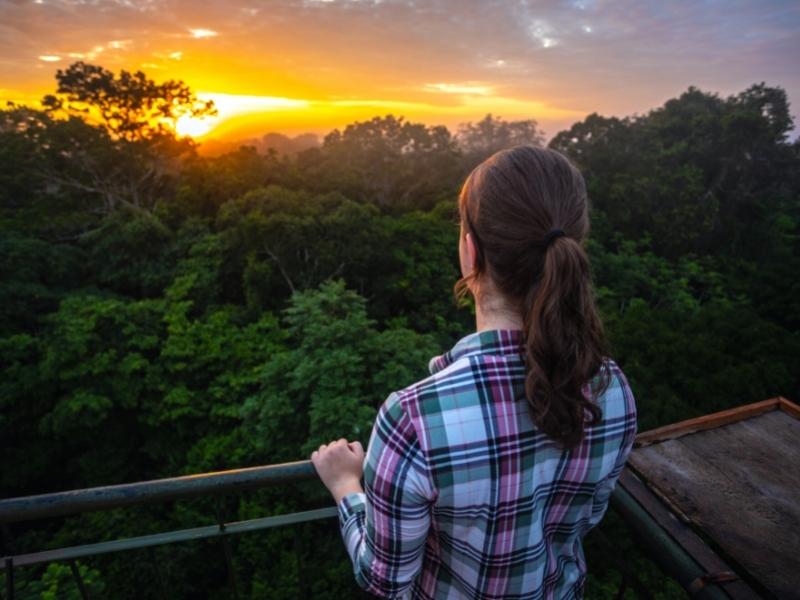
Dive deep into the culture and landscapes of Peru with this adventure to Machu Picchu, the Amazon and more. Search for wildlife along jungle trails and rivers in the rainforest from a comfortable lodge then head up into the Andes to Cusco, the capital of the Inca empire.

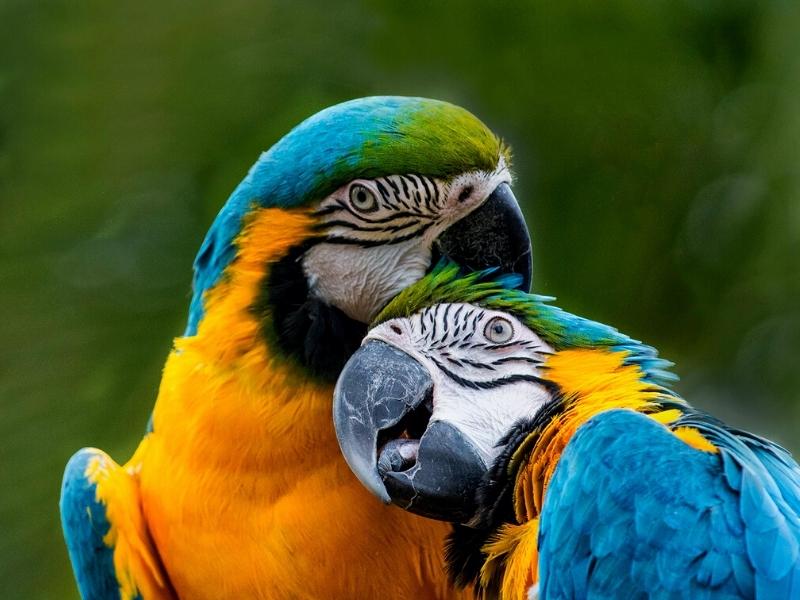
Peru is a country with different cultures and beautiful landscapes. It has one of the best gastronomy in the world. This tour is designed for travelers looking for unique and special moments in their vacations, and families who want to avoid crowds. You will visit the ancient city of Lima, the Amazon forest, the beautiful sacred valley of the Incas, the wonder of Machu Picchu.

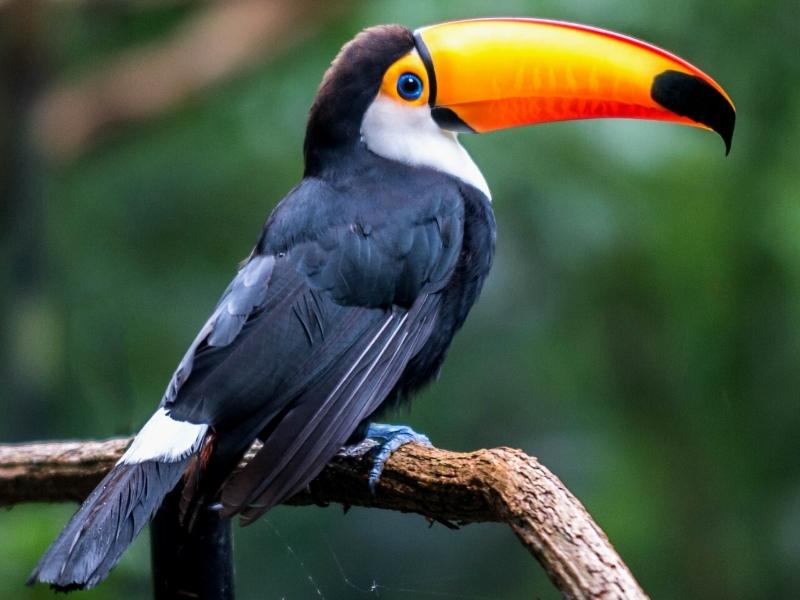
The 3 Days Tambopata Adventure Tour is exclusively designed for those wanting to experience the best of Peruvian Amazon Rainforest in a short time. The Tambopata jungle adventure offers an insight to the culture and amazon wildlife.


Your journey to the Tambopata National Reserve offers a great opportunity to discover a lively biodiversity of birds, mammals, reptiles, insects and trees. Record-setting numbers of animal species are concentrated within small areas, and the variety of plant life is greater than almost anywhere in the world.
